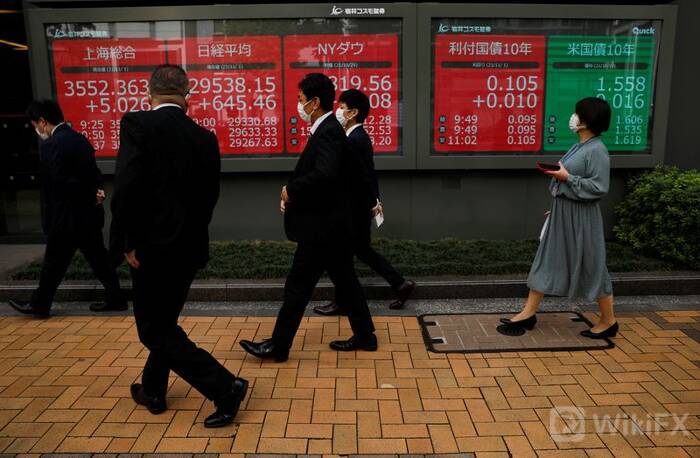
The dollar was up on Tuesday morning in Asia. Meanwhile, the yen traded near a one-month low to the U.S. currency as uncertainty about the omicron COVID-19 variant was largely consigned to the background, and investors risk appetite improved.
The U.S. Dollar Index that tracks the greenback against a basket of other currencies inched up 0.02% to 96.110 by 10:15 PM ET (3:15 AM GMT).
The USD/JPY pair inched up 0.06% to 114.90, with the yen falling as far as 114.935 against the dollar for the first time since Nov. 26 and approaching the year-to-date low of 115.525 hit on Nov. 24.
Data released earlier in the day in Japan also said that industrial production grew a better-than-expected 7.2% month-on-month in November. It also said that the jobs/application ratio was 1.15, while the unemployment rate was 2.8%, in November.
The AUD/USD pair inched down 0.01% to 0.7234, with the riskier Australian dollar inching up back towards the three-week high it hit on Friday. The NZD/USD pair inched down 0.01% to 0.6807, with New Zealand and Australian markets closed for a holiday.
The USD/CNY pair inched up 0.03% to 6.3722, with the Peoples Bank of China reiterating on Monday that the yuan exchange rate will be more flexible in 2022 and will remain stable overall at a reasonable and balanced level.
The GBP/USD pair inched down 0.06% to 1.3429.
U.S. shares were on an upward trend, with the S&P 500 closing at a record high on Monday. The safe-haven U.S. dollar remained near toward the bottom end of its recent trading range, even as a hawkish tilt by the U.S. Federal Reserve at its latest policy meeting earlier in the month.
“Markets globally are optimistic” that omicron won't derail an economic recovery, denting demand for haven currencies, predominantly the yen, Citigroup (NYSE:C) Global Markets Japan head of G10 FX strategy Osamu Takashima told Reuters.
The U.S. equities rally “implies that currently investor risk appetite must be very, very strong” despite expectations for faster Fed tightening, he added, predicting that the yen is likely to test its 2021 low in the near term.
